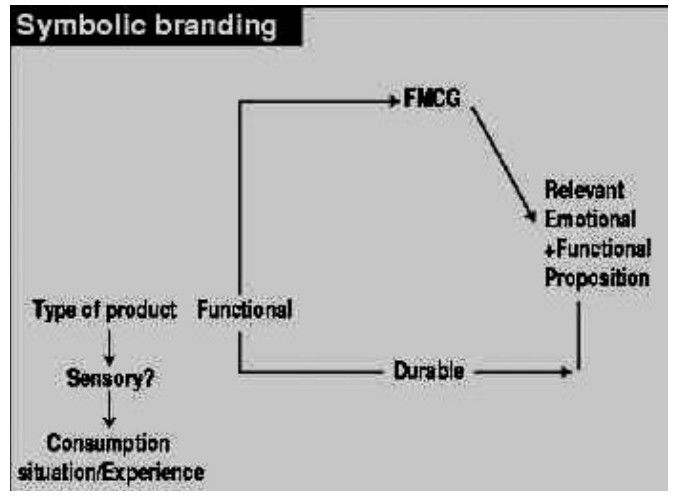While emotional benefits have been recognized by marketers as a prerequisite for sustaining brand success, they would have to follow a structured approach to create and nurture emotional branding. Symbolic branding is useful in a number of ways to the marketer. It is able to build a relationship with the consumer and if this is sustained, the loyalty, which is so formed, has a lasting psychological impact. Harley Davidson in bikes, Mercedes in cars and Ray Ban in goggles are examples of symbolism attached to brands in various ways – status, fun and adventure or simply gratification of inner needs. In fact, an emotional brand could also become a cult brand over time with appropriate marketing mix elements.

Basics
It may not be possible for most brands to become symbolic/ emotional brands without establishing themselves on the functional platform. In most product categories (even in service categories such as banks, hotels and travel services), consumers seek benefits that can add value to their time, convenience or performance. In apparels, easy maintenance adds to convenience; goggles’ protection of the eyes adds value to the well-being of the consumer and his performance in various activities.
There are some exceptions. Soft drinks, ice creams, perfumes, cigarettes and chocolates are categories which convey sensual gratification and hence they are sensory products. The difference between functional and sensory product categories is that consumers can have a tangible and realizable perception of functional benefits but with regard to sensory experience, it would be difficult to have a firm assessment of the sensory experience. Given the nature of such experiences, an individual may perceive them to be ‘better’ or average depending on a variety of sensory inputs which change from time to time – interest levels, priority given to such an experience, mood during consumption, and so on.
The basics of symbolic branding involve identifying the specific category of service or product to find out how amenable the category is to emotional branding. The magnitude and intensity (or even the time frame involved) could be different for different categories. Coke advertises with the words ‘Sparkle on your tongue’ (in the US context), emphasizing the sensory experience. Cadbury’s World, a well-known visitor’s centre in the UK, emphasizes sensory experience and even the Cadbury’s moulded version advertised in India does that. In all these examples, the focus is more on experience than emotion.
In contrast, Cadbury’s Temptations uses emotional appeal in its TV commercial. Symbolism in this context is broad-based and could be the feeling of belonging to a group, self-concept, relationships and self-esteem. There are a number of brands of perfumes and deodorants that are relationship-oriented appeals.
Pepsi, another product in the sensory category, uses the feeling of belongingness through reference group appeals. Coke, in India, also uses group appeals, which generally involve ‘groups and activities’ appealing to the target segment. A brand in the sensory category can either highlight sensory consumption (consumption situation) or resort to emotional appeal. A powerful brand such as Coke or Pepsi could even alternate between the two kinds of positioning, taking care to ensure such strategies complement one another. Lifebuoy uses the functional benefit of doing away with germs to create a bond.

